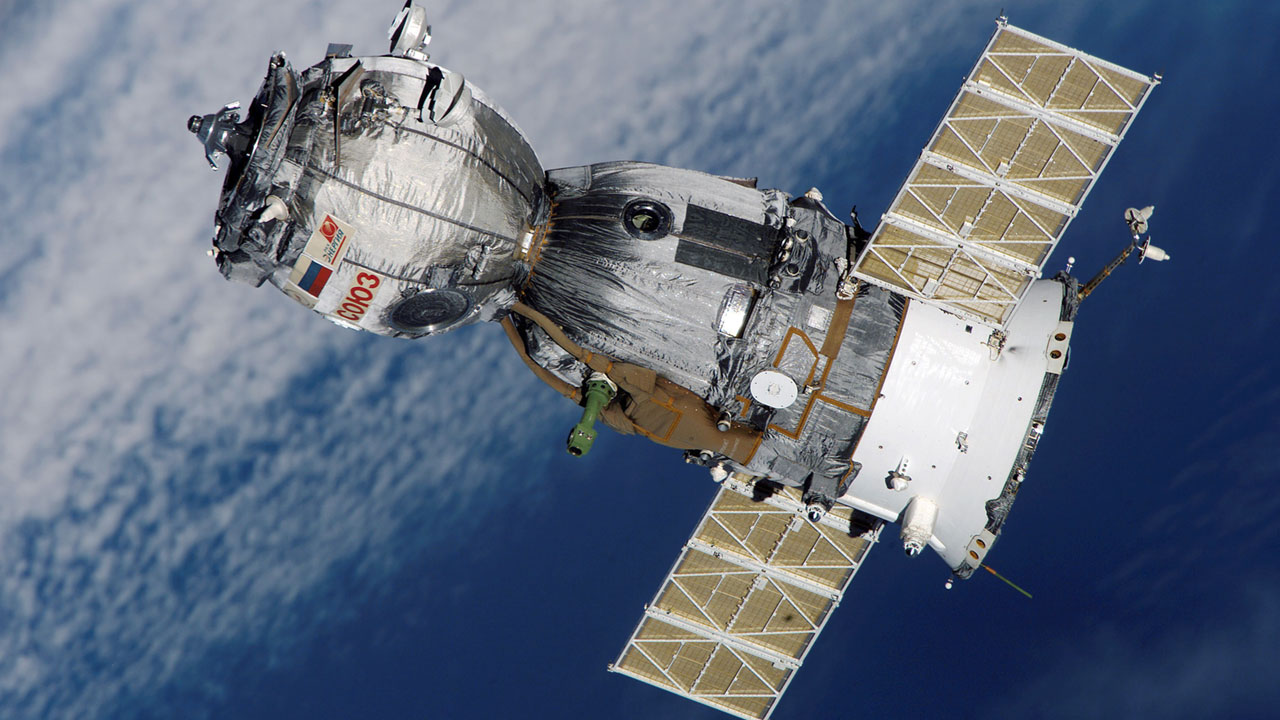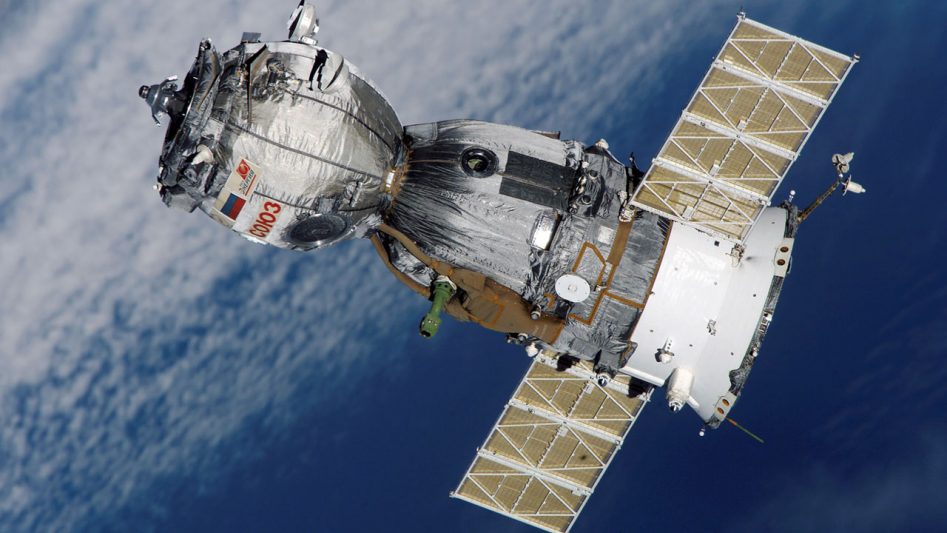
From Rocky to Reliable: The Beginning of the Soyuz
On April 23, 1967, the Soviet space program launched the first manned Soyuz mission of what would turn out to be the most reliable vehicle to deliver humans to and from low Earth orbit. This vehicle would prove so reliable, in fact, that it is still used today and is currently the only means to ferry people to and from the International Space Station.
Yes, you read that correctly, the most reliable spacecraft in manned spaceflight history was born out of Cold War era, Soviet technology. But this pinnacle of reliability had a rocky start, rife with political pressure, faulty engineering, and unsubstantiated risk.
Soyuz has a familiar upbringing. Born out of the mind of the same man who would be credited with most of the USSR rocketry and space successes: Sergei Korolev. The spacecraft was originally designed by Korolev as part of the moon missions or the Soviet version of the Apollo spacecraft.
Similar to the United States Apollo program, the Soviet space programs suffered from daunting political pressures to “out space” the other side. Soyuz 1 launched just three months after the crew of Apollo 1 died in the fire on the launchpad and made its mark on the space race with a disastrous ending of its own.
Although the USSR succeeded in sending a man into space first, the Americans had been nipping at their heels, and in the fall of 1966, it had been almost two years since a Soviet manned mission had launched. They needed something major to keep pace. The program was caught up between old technology, the Voskhod spacecraft which was a modified version of the Vostok, the same craft that took Yuri Gagarin into space over five years earlier, and the new technology, the Soyuz. However, with the catastrophe of Apollo 1, the Soviets had a fresh opportunity to regain their place as lead dog. The launch of the Soyuz became a political necessity to keep the Soviet horse in the space race. Plus, the 50 year anniversary of the Bolshevik Revolution was coming up in May 1967 and the Soviet government wanted the celebration to include a new foot forward in space.
Several unmanned test flights of the Soyuz took place from the end of 1966 through the spring of 1967. As did most Soviet missions, these early flights operated under a cloak of secrecy, and the used the code name Kosmos to hide their true nature. The first flight, Kosmos 133, successfully entered orbit, but had issues with attitude control from the get-go. The mission was originally set to rendezvous with another unmanned Soyuz vehicle, but this was cancelled when it was apparent that control of the vehicle was a problem. The issues continued well into reentry and when it finally deorbited, the vehicle was self-detonated after it was determined that it would land in China, not in the USSR.
A second Soyuz, the one that had been intended to dock with the first, was set to launch two weeks later but exploded on the launch pad after a malfunction with the rocket booster. This caused a major setback in the launch schedule while the launchpad was repaired in the middle of a brutal Kazakhstan winter.
The third flight, Kosmos 140, was originally to be manned, but due to the failure of the first two, was launched unmanned on February 7, 1967. Its success was critical to the timing of the first manned flight. If this third vehicle was not successful, the Soviets would not be able to lift off with their newest manned mission by the looming deadline of the 50 year anniversary.
Liftoff and orbit were successful, although there were still issues with attitude control. However, these concerns were dusted off as problems that could be fixed by simply having a pilot onboard to manually take control of the system. During reentry, the vehicle worked as expected with a deorbit burn and the three modules separating correctly. However, communications with the spacecraft never resumed after reentry blackout.
After a four-hour air search, the vehicle was found, some 510 km off the target landing zone, sitting on the ice of the frozen Aral Sea. The capsule eventually melted the ice and sank 10 meters to the bottom where it was later recovered by divers. It was discovered that a hole had burned through the bottom of the capsule, causing depressurization of the main cabin.
Because of the political pressure to get another man into space, this test was considered “good enough” and despite multiple issues still apparent with the spacecraft, it was decided that they would go ahead with the manned mission of the Soyuz in April 1967. Provided, of course, that the proper changes had been made to shore up the heat shield and prevent another capsule breach as had happened on Kosmos 140. This breach in the hull turned out to be a critical factor in hiding a dangerous miscalculation with the parachute system of the spacecraft.
The pilot of Soyuz 1, Vladimir Komarov, knew ahead of the mission that the spacecraft was shaky, at best. In fact, the cosmonaut corp was so bothered by the plethora of mechanical issues, that they supposedly drafted a 10 page document detailing the risks in hopes that the launch would be postponed. To no avail, the launch would proceed as planned.
Liftoff of the first manned Soyuz mission was a success, but mechanical issues plagued the flight from the start. One of the solar panels failed to deploy, causing power loss and blocking a star tracker that was used for navigation. Because the navigation system was hampered by the undeployed solar panel, attitude and orientation were constantly an issue, and reentry became significantly more complicated. With the spacecraft dying from lack of power and the reentry window closing rapidly, Komarov had to initiate a risky manual reentry manoeuvre.
The reentry procedure was, however, successful and the Soyuz and its occupant made it through the upper atmosphere intact. But alas, after surviving the fiery reentry, the parachutes failed to open properly, causing the craft to slam into the Earth at over 150 km/hr, killing Komarov on impact and flattening the vessel like a pancake.
The fateful malfunction in the parachute had to do with air pressure from the reentry capsule squeezing on the cylindrical container that held the main parachute, causing a pressure buildup within the container. Because of the additional pressure, the braking parachute did not have enough force to liberate the main parachute from the container. Had the prior flight of Kosmos 140 had a fully pressurized capsule, they likely would have had this malfunction with that vehicle as well and been able to correct the error before Komarov took flight. But since the heat shield on the prior mission failed and caused a hole in the bottom to depressurize the cabin, no such pressure buildup in the chutes occurred.
Over the next four years, many of the mechanical issues were addressed and a number of successful manned Soyuz flights took place. However, there would be one more catastrophe in store for the spacecraft.
The flight of Soyuz 11 in the summer of 1971, marked a triumph for the Soviet space program. The 11th mission of the Soyuz program brought a group of three cosmonauts, Georgi Dobrovolski, Vladislav Volkov, and Viktor Patsayev, to the first Soviet space station, Salyut 1. The men were national heroes having spent a record 23 days at the station. The Soviet public was enamoured with the cosmonauts, who had their own nightly spot on national television for the duration of their stay at Salyut. But unlike its Apollo 11 counterpart, the first successful Moon landing, Soyuz 11 would not be so fortunate.
The automated reentry of Soyuz 11 was perfect, however, despite the textbook reentry and landing, communications with the crew could not be reestablished after the blackout. At first, the ground crew assumed that there had been a malfunction with the communications system since the capsule appeared to be in perfect condition. But unbeknownst to all who watched on for the return of the beloved cosmonauts, a valve, meant to allow fresh air into the capsule after the parachutes opened, had opened prematurely in the vacuum of space, killing all three astronauts within seconds.
When the recovery team finally pried the hatch open to the perfectly intact spacecraft, the three men were found dead due to loss of cabin atmosphere. Rather than celebrating a triumph in long-term space travel, the nation mourned the very first (and to this date, only), humans, to perish in space… that is, at an altitude above 100 km.
The most ironic part of the incident? The whole tragedy could have been avoided had the astronauts simply been wearing spacesuits. This accident prompted both the Soviets and the Americans to change their policies regarding spacesuits. Remember in the movie Apollo 13, when the three men finally make it back to Earth and reenter the atmosphere in the Odyssey command module wearing only their blue flight suits? The failure of the Soyuz 11 capsule, a little over a year later, would prompt both space agencies to require astronauts to wear pressure suits during reentry, a policy that is still in place to this day.
So it is that the rocky adolescence of the Soyuz program grew into the most reliable and cost-effective spacecraft to ever deliver humans to space. I bet the NASA engineers of the 1960’s would have never imagined that a Soviet-born technology, whose first few years were fraught with malfunction, would be America’s only outlet to the ISS, 50 years later. As for the future of the Soyuz? There are plans to decommission the program within the next few years. But as for now, it continues to be the tried and true method for making the voyage into space. The old adage rings true for this design… If it ain’t broke, don’t fix it.
References:
Staff writers of Space Safety Magazine (Unknown Publication Date) Soyuz 1, Retrieved from: http://www.spacesafetymagazine.com/space-disasters/soyuz-1/
Staff writers of Space Safety Magazine (April 28, 2013) The Crew That Never Came Home: The Misfortunes of the Soyuz 11, Retrieved from: http://www.spacesafetymagazine.com/space-disasters/soyuz-11/crew-home-misfortunes-soyuz-11/
Anatoly, Zak for Russian Space Web (Last update October 30, 2017) Kosmos 133: Soyuz Lifts Off!, Retrieved from: http://www.russianspaceweb.com/soyuz-7k-ok-kosmos-133.html
Anatoly, Zak for Russian Space Web (Last updated October 30, 2017) Kosmos 140: Paving the Way to… Disaster, Retrieved from: http://www.russianspaceweb.com/soyuz-7k-ok-kosmos-140.html


